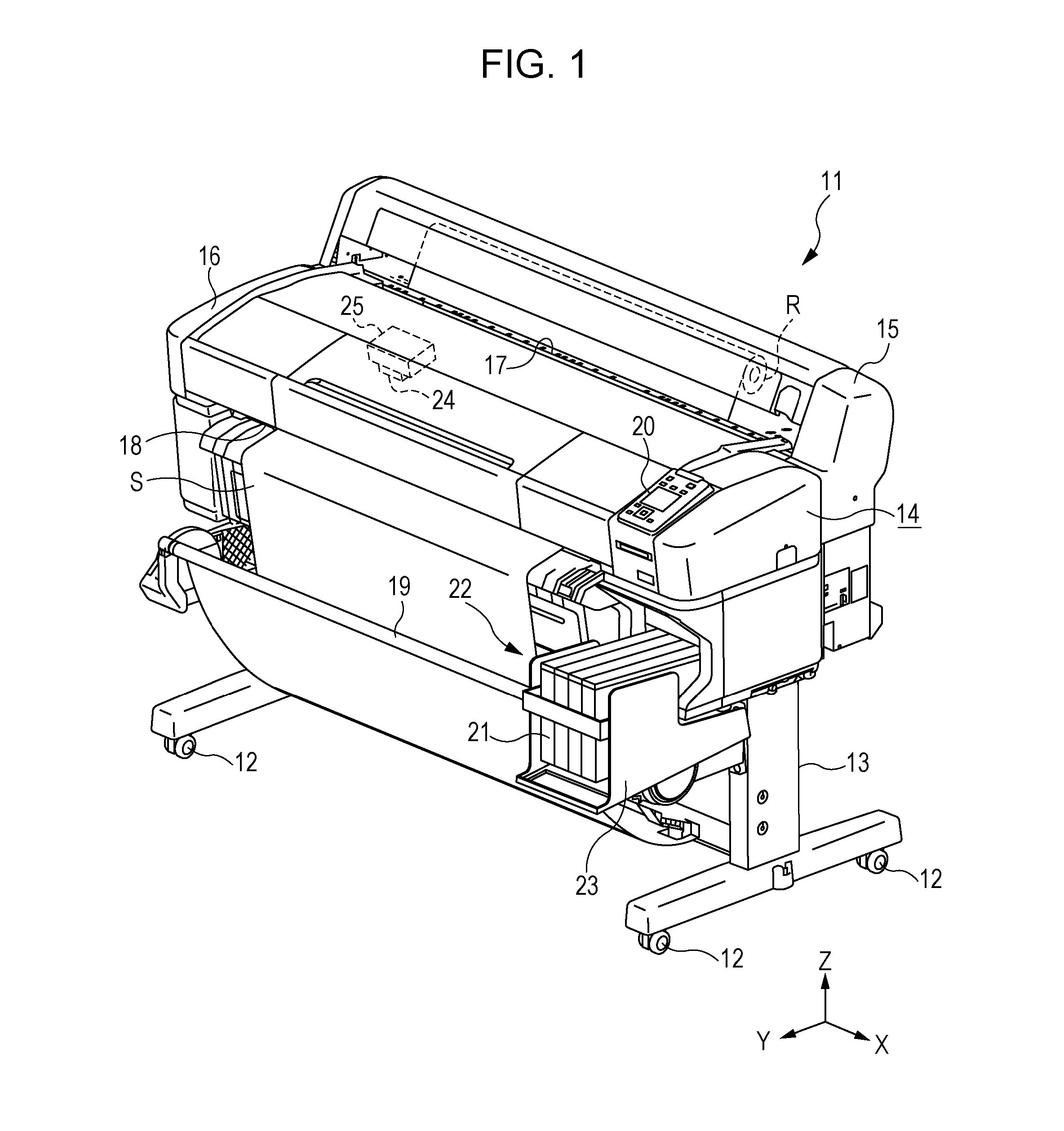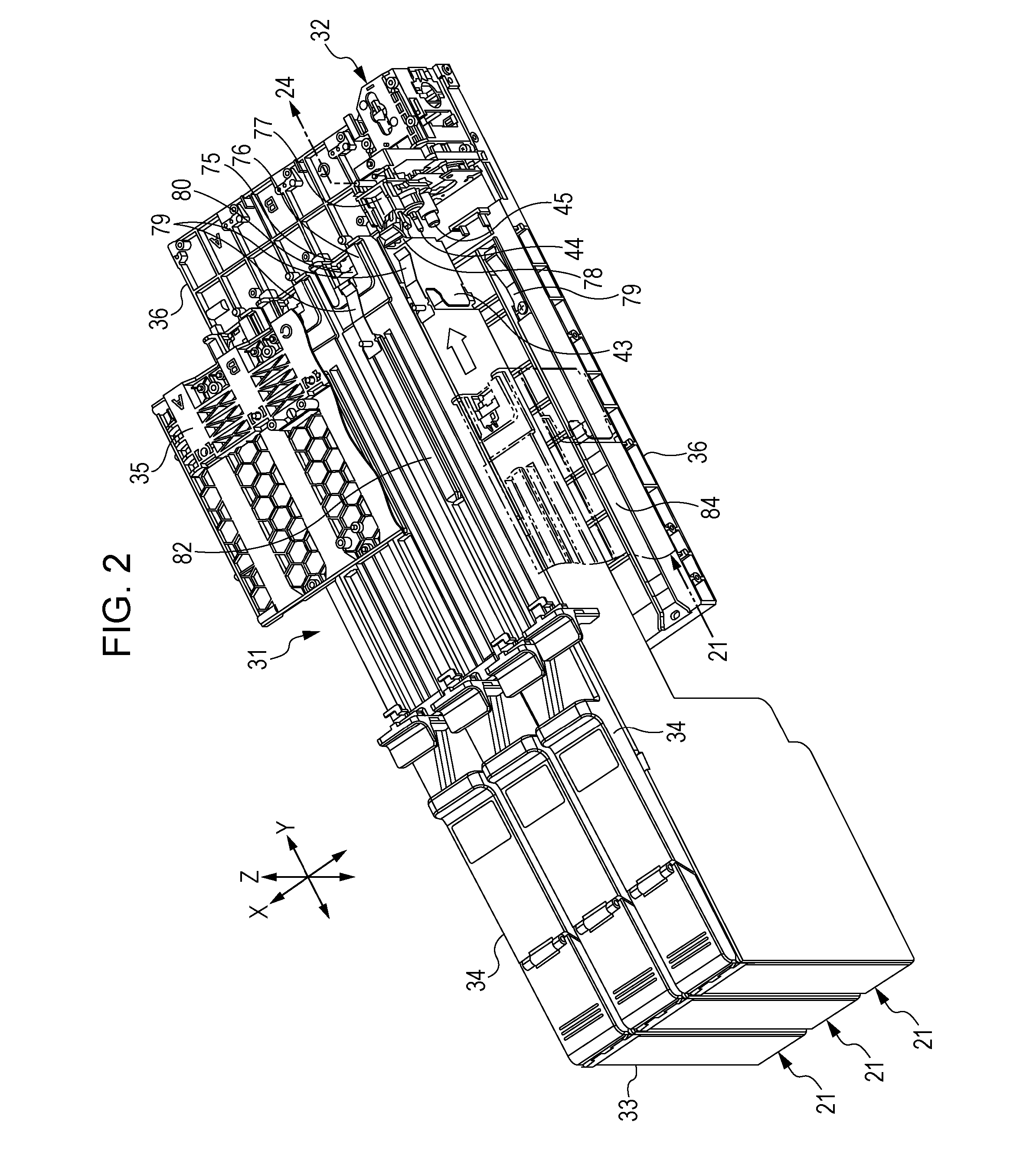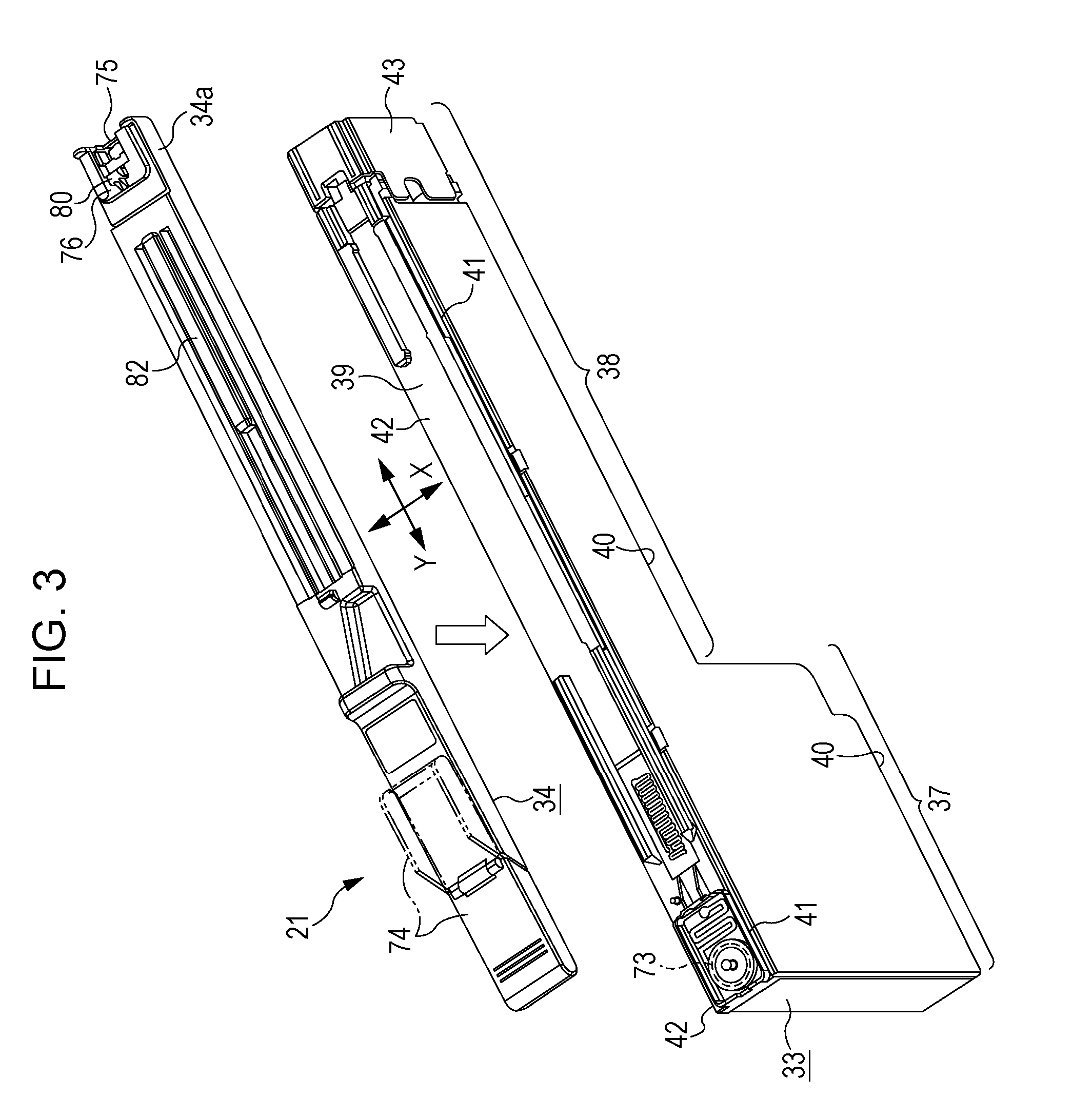Ink and dyed article
a dyeing article and dyeing technology, applied in dyeing process, inks, printing, etc., can solve the problems of reducing the stability of droplets, containing dispersed dyes, and refillable ink cartridges that suffer from the formation of insoluble materials in ink, so as to achieve excellent color saturation, prevent the formation of insoluble materials, and excellent storage stability
- Summary
- Abstract
- Description
- Claims
- Application Information
AI Technical Summary
Benefits of technology
Problems solved by technology
Method used
Image
Examples
example 1
[0113]Ink was prepared in the following way. A disperse dye (C.I. Disperse Red 60), a resin dispersant (a styrene-acrylic copolymer), an ingredient (D) represented by formula (2) (R and m in formula (2), oleyl and 26; HLB, 16.2), and ion-exchanged water were mixed. In a sand mill, the mixture was cooled and dispersed with 0.2-mm glass beads for about 15 hours. The dispersion was diluted with ion-exchanged water, and the diluted dispersion was filtered through GC-50 glass fiber filter (Toyo Roshi Kaisha, Ltd.; pore size, 0.5 μm). In this way, an aqueous dispersion containing no coarse particles was obtained. This aqueous dispersion was diluted with ion-exchanged water to yield ink (a sublimation transfer ink). The following is the composition of the obtained ink.
C.I. Disperse Red 605.0%by weightStyrene-acrylic copolymer2.5%by weightIngredient (D)0.3%by weightTriethylene glycol monomethyl ether3.0%by weightGlycerol15.0%by weightTriethanolamine0.5%by weightIon-exchanged water73.7%by we...
examples 2 to 9
[0114]Ink was obtained in the same way as Example 1 except that the ink composition was changed in accordance with Table 1.
PUM
| Property | Measurement | Unit |
|---|---|---|
| hydrophilic-lipophilic balance | aaaaa | aaaaa |
| mass | aaaaa | aaaaa |
| storage stability | aaaaa | aaaaa |
Abstract
Description
Claims
Application Information
 Login to View More
Login to View More - R&D
- Intellectual Property
- Life Sciences
- Materials
- Tech Scout
- Unparalleled Data Quality
- Higher Quality Content
- 60% Fewer Hallucinations
Browse by: Latest US Patents, China's latest patents, Technical Efficacy Thesaurus, Application Domain, Technology Topic, Popular Technical Reports.
© 2025 PatSnap. All rights reserved.Legal|Privacy policy|Modern Slavery Act Transparency Statement|Sitemap|About US| Contact US: help@patsnap.com



